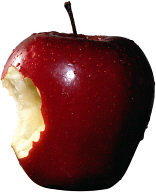I’ve been working hard at losing weight and eating [even] better for over six months now but I must admit that snacking has been a hard habit to break. Maybe if I could just nibble on a few things throughout the day that wouldn’t be so bad; however, I also love a good breakfast, lunch and dinner. Combined that is just way too many calories! What was I going to do?
Well, one day while flipping through the TV channels I caught part of a story about a supermodel (on average a group of VERY skinny people) who keeps boiled eggs on hand for when she is hungry. Since I’ve always been a fan of eggs (fried, scrambled, deviled – the list goes on and on!) I did some research on eggs in general and then put some boiled eggs to the test. Here’s what I’ve found out:
- Cholesterol: For a long time eggs were considered bad for you because they would raise your cholesterol levels. Well, turns out that they were wrong. Eating a couple of eggs a day won’t adversely affect your cholesterol and their other health benefits far outweigh that small amount anyway.
- Calories: Depending upon the size of the egg you are looking at between 60 to 80 calories each. There are tons of chips, cookies, and other snacks being sold in 100 calorie packs which cost more and have little to any of the health benefits of an egg.
- Nutrients: Since the egg is designed to be the vehicle by which a chick grows it should be no surprise that they are packed with good things. Vitamins include B2, B5, B12, and D. Also included are phosphorus, selenium, iodine, and choline (essential for brain function). And let’s not forget protein, on average you get 6 grams per egg or about 12% of your daily needs. The great thing is that all this goodness is packaged in a form that is very easy for the body to digest and absorb.
- Hunger: I’ve been really surprised to find that if I eat an egg it really satisfies my hunger. I’ve also found that I don’t get as hungry later. Something about all that protein keeps my system happy, and not hungry, for quite a while.
Of course, one problem is how to prepare them so they are not a pain in the neck to peel (!!!). Here’s my sure-fire solution:
- Start with eggs you purchased a week ago, fresh ones are just too fresh for this process.
- Take a big pot of water, add a little salt and oil (keeps the water from boiling over), and room temperature eggs – keeps them from cracking open as they heat.
- Bring this just to a boil, turn the burner down to low, and put a lid on the pot.
- Set a timer for 25 minutes.
- When the buzzer sounds, drain the water from the pot and add a bunch of ice to cover the eggs. Add cool water over this to cover the eggs and ice. Let them sit for a couple of minutes.
- You should find that the eggs peel easily at this point. Don’t let them sit too long before starting; and I tap the egg against the side of the sink to ensure that the shell is cracked all around.
If you would like to find out more about the health benefits of eggs, here are a couple of good sources: The World’s Healthiest Foods and Benefits Of Net.
Enjoy!




